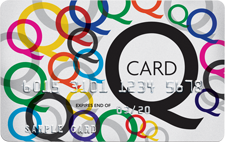CHILDRENS VISION
ENSURE YOUR CHILD HAS A CLEAR VIEW
80% of Our Learning is Visual…
So if the visual system is not working correctly our learning is affected. Children with uncorrected vision problems can struggle to develop academically, socially and athletically.
Signs your child may be experiencing visual problems:
- Trouble with school work – not seeing the board at front of the class
- Sitting close to the television
- Not being able to see things in the distance
- Sore eyes
- Rubbing their eyes
- Slow reading or having to use a finger to guide their reading
- Closing one eye when reading
- Headaches and dizziness
- Excessive blinking
COMMON VISUAL PROBLEMS IN CHILDREN
- Myopia – near sightedness which means your child can see objects in the distance very well
- Hyperopia – long sightedness which means eyes can become tired and sore when trying to do things close up
- Astigmatism – blurred vision
- Amblyopia – `lazy eye’- this is where one eye can turn inward or outward. It needs to be treated early – if left untreated after the age of 6 this can become a permanent condition
- Colour deficiency – means that some colours cannot be seen clearly, affecting 1 in 12 boys and 1 in 200 girls
MANAGING MYOPIA
Regular eye checks for children are important as it means we can detect and treat any of the above problems.
It has been established that managing myopia in its early stages can slow its progression, reducing the potential risk of developing high myopia and its associated conditions.
There are very successful treatments and strategies that our optometrists can recommend to slow the progression of myopia in children.
- MiyoSmart Spectacle lenses from Hoya (https://www.hoyavision.com/au/discover-products/for-spectacle-wearers/special-lenses/myopia-management/)
- MiSight Soft contact lenses from CooperVision https://coopervision.co.nz/misight
- OrthoK
All these options will be discussed at your child’s comprehensive eye exam.

